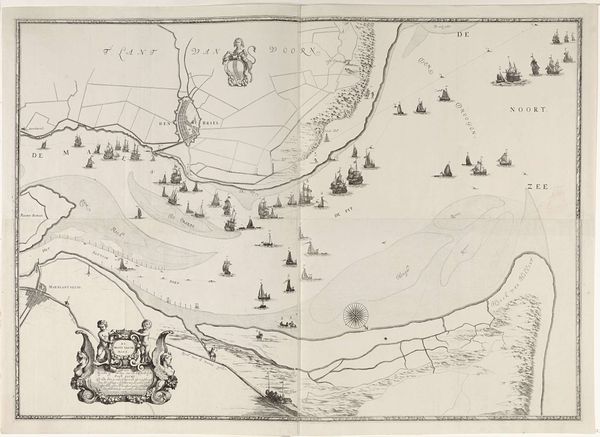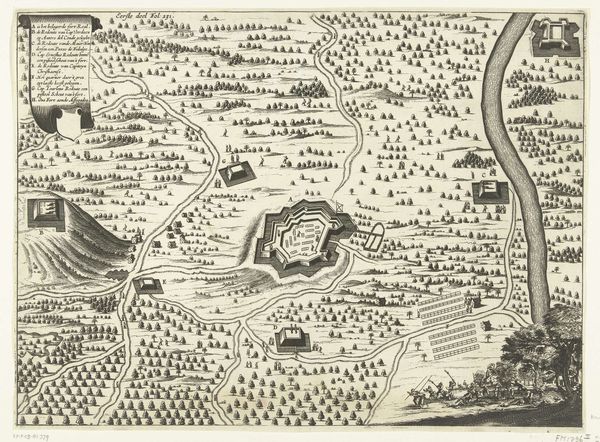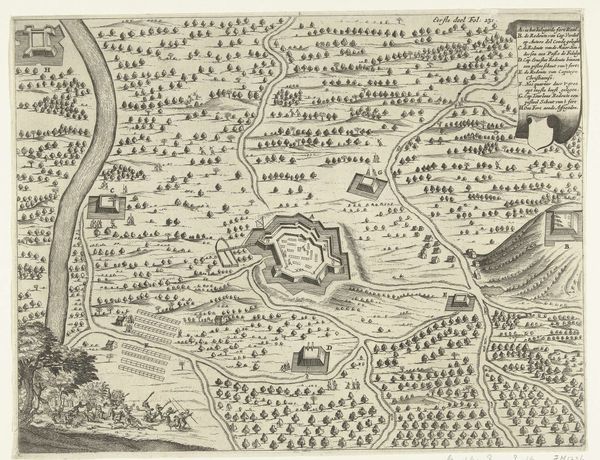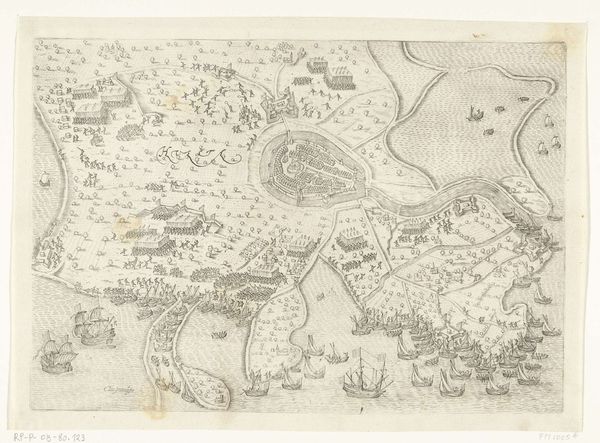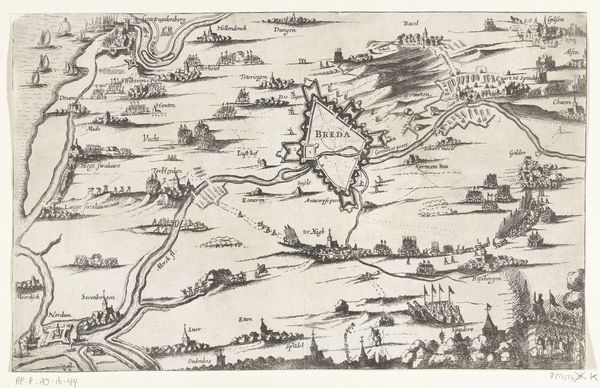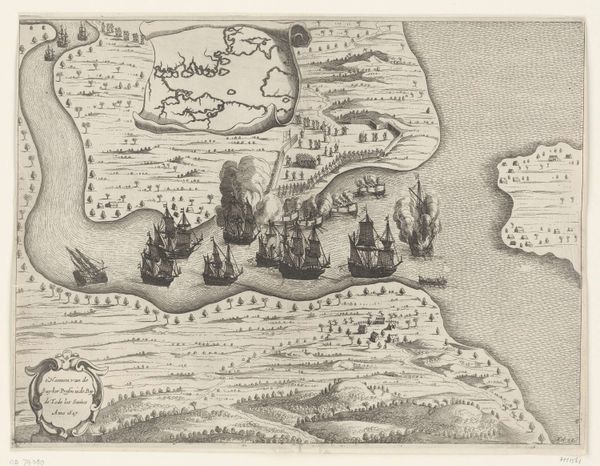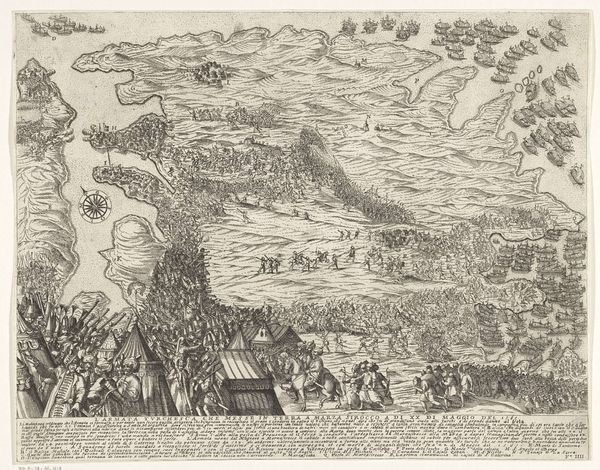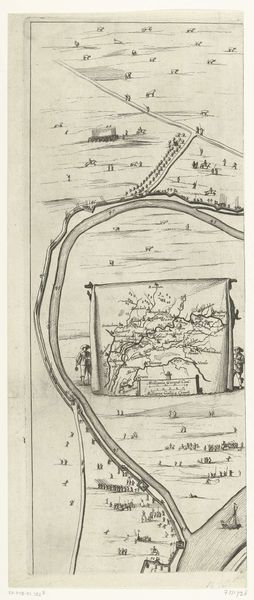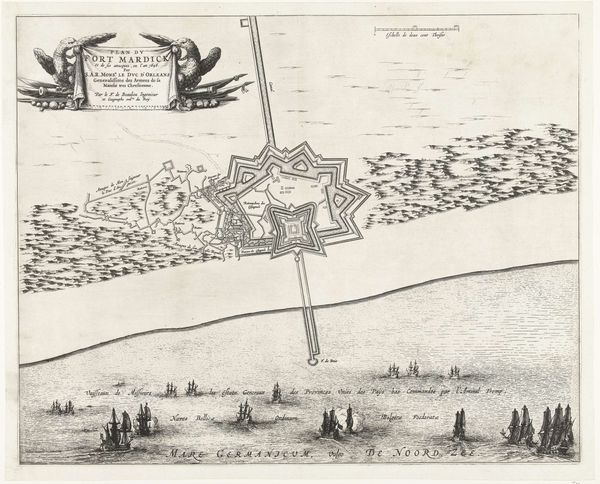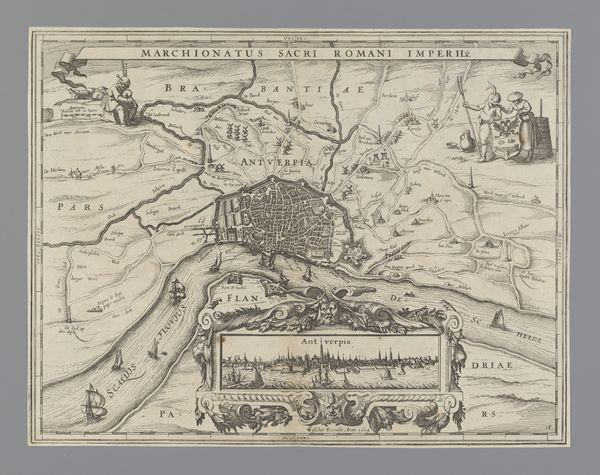
Plattegrond van Duinkerken, belegerd door het Franse leger onder de hertog van Enghien, 1646 1646
0:00
0:00
print, engraving
#
baroque
#
pen drawing
# print
#
old engraving style
#
line
#
cityscape
#
engraving
Dimensions: height 494 mm, width 612 mm
Copyright: Rijks Museum: Open Domain
Editor: So, here we have an engraving from 1646, "Plattegrond van Duinkerken, belegerd door het Franse leger onder de hertog van Enghien," from an artist with the profile name Richer. It shows a city map of Dunkirk, besieged by the French army. It looks so precise and detailed for that time! What stands out to you most about this work? Curator: For me, it's the story this print tells about production and labor. Think about the skilled engraver meticulously cutting into a metal plate, translating the cartographer’s knowledge of the terrain into reproducible form. What kind of labor force enabled this kind of production on a larger scale? Editor: I hadn't considered that perspective. So, instead of seeing a simple map, we're really looking at the end product of numerous, specialized labors? Curator: Exactly! And that labour extends beyond just the making of the physical object. It embodies military strategy, urban planning and how the social context influences what needed to be illustrated with this medium, what the engraving itself produces. What was the impact of making such geographical information visible and easily shared? Editor: It could be a strategic tool for planning sieges or consolidating power… it seems so much more potent when you think about its active role! Curator: Precisely! And consider the economic aspects; Who was purchasing this print? What social class could afford access to this kind of visual information? How did this distribution contribute to the dynamics of power during the war? Editor: I see it differently now. It's not just a historical record. Curator: No, it’s about understanding the materials, labour and power that made its existence possible and its effects considerable. Editor: Thanks! I’ll never look at a simple print the same way again.
Comments
No comments
Be the first to comment and join the conversation on the ultimate creative platform.

